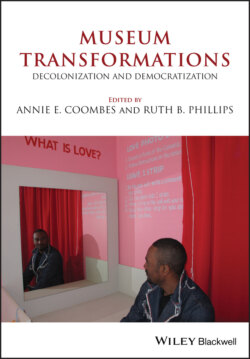Читать книгу Museum Transformations - Группа авторов - Страница 43
A moving experience
ОглавлениеThis is what happens to many people who have passed through the memorial and then visited the center. After returning from the subterranean exhibition to daylight and into the memorial visitors often feel changed. Many are moved to tears. It might be a common experience that people, after they have visited the center, are able to really feel the essence of the site, which Agamben (quoted at the beginning of this chapter) described in a poetic way. As architect Peter Eisenman (2005a), who was originally opposed to the center, put it in an interview with the the Nation: “It’s not just the columns and it’s not just the archive it’s the fact that they stand together, and you have to see them apart and together and understand the edge between the two.” The interaction of both, the memorial and the underground center, makes this a unique and very special place of Holocaust commemoration in the German capital. Would the memorial have the same effect without the center and vice versa? Both would not be the same. The memorial would probably be perceived by many who have no knowledge of the Holocaust as an adventure playground; the information center discreetly hidden underground “needs the attraction of the field of stelae to draw visitors and to be properly valued,” Brigitte Sion observes (2008, 216). In the center, the presence of the great memorial above can be felt. When we leave the exhibition and go up to the memorial, we have more knowledge, and above all take images and traces of the victims with us while we experience the memorial anew. Together, these two parts of the ensemble “offer an original and moving experience of Holocaust memory, but not separately” (Sion 2008, 216).
